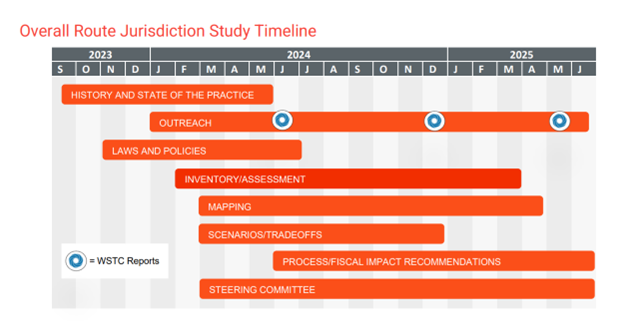The 2023-2025 transportation budget contained a proviso that caught many of us off guard and sent an air of concern through the transportation community – a study to be conducted by the Transportation Commission that would assess Washington’s current state highway inventory and local roadway designations to determine if changes are needed in jurisdictional assignment among state, county, and city road systems.

The assessment will also review current criteria used to define the state highway system to determine if they continue to be applicable; the final report is due to the Legislature in 2025.
Initially, many wondered where the idea for this study came from, and how its results could affect county road inventories.
Where did the idea for the study come from?
After clarification from the Transportation Commission, we learned that they proposed the proviso, as their role includes the responsibility to consider petitions for route jurisdiction transfers from cities, counties, and the Washington State Department of Transportation.
Why is it needed?
The last study of this kind was done in the late 1980s. Since that time, Washington has experienced incredible growth, seen new cities incorporated, the adoption of the Growth Management Act, advances in technology, and the condition and type of road infrastructure change.
The Commission asked the Legislature to direct this study so that necessary updates to transfer criteria can be made, and a refreshed assessment of the current state highway system can be conducted.
What is the goal?
The intended result of this study is to inform law makers on recommended changes that will enable the advancement of a transparent and collaborative process between the state and local jurisdictions as true partners and stewards of the collective state roadway system.
What should you know?
Earlier this year the County Road Administration Board met with staff from the Transporation Commission to talk through the goals of the study and express our willingness to assist where needed. After conversations with the commission and counties we agree that now is a good time to reevaluate these processes. A lot has changed in the last 35 years, and the needs and capacities of local governments and the state have changed.
The Commission will be establishing a steering committee to help inform the process and CRAB looks forward to participating.
You can view more information about the study by visiting the Commission’s webpage or through a summary here.

